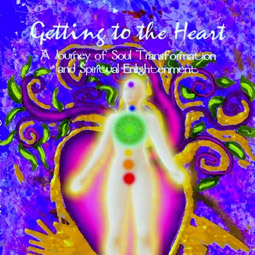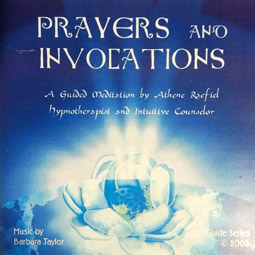Planets and the Zodiac
Athene Raefiel
It is very important to take interest in, and learn about, the solar system and the Universe as a whole. Of course Astronomers and Astrologers have been saying this forever and a day, but it all seems so complex sometimes. I have decided to try and make it a bit easier for you to understand the planets movements in our Solar system as it moves through the twelve signs of the zodiac.
The twelve signs of the Zodiac are pretty familiar to everyone, yet to be able to identify their formations in the sky is quite different from knowing their names. There are actually 88 constellations which can be divided into eight constellation families, (See footnote: See Menzel, “A field Guide to the Stars and Planets”). The Ancient Greeks used to assign their Gods to certain figures in the sky. Because of their Northern location, they gave names only to those regions visible from their countries.
The current zodiac is based on twelve constellations in the sky mostly named by the Greeks. Stories of how these constellations were named are learned through Greek Mythology. The constellations of the zodiac we know nowadays reach back to the days of the Babylonians and Chaldeans, 2000 to 3000 years ago. Back then the sun passes through twelve constellations we still assign to the zodiac. But since those times, there have been several changes to the assignment of the stars.
Everything in Astrology and Astronomy is based on Arcs and Degrees. An Arc is a breakdown of minutes and seconds of Degrees that gives an Angular separation. As we look at the sky it appears to be round, just as do the Earth and the Planets therein. For this reason Arcs and Degrees are the main measurement used to assure proper Declination and Ascension.
When we have a planetary alignment it can occur in many different configurations but to simplify for you, many planets line up at close Degrees within the same sign or Constellation where they are importantly aspected to one another, as well as planets residing in other signs. These aspects are of particular importance because of the effects they present. When this occurs these existing planets affect the Natal chart of each individual as well as that of each planet and sphere. It is much like taking many different energetic frequencies and jamming them all together to see how they affect the whole. These planetary alignments sometimes wreak havoc on our civilization and planet as a whole as their resonation can be like nails on the chalkboard. These energies often times, create very intense frequencies making it harder to decipher or disseminate what we feel and think.
It is as if musicians in a symphony are all warming up at the same time and none is yet playing together to create harmony; searching to find a key to play in that will blend well with the other notes. This is how these planetary frequencies and energies sometimes affect us individually as well as collectively.
If you are a sensitive during these experiences you may feel totally out of sync. Depending of the placement of the Planets and their proximities in your Natal Chart, you could be affected by racing thoughts, emotional instability, physical illness and bouts of indecisiveness. Feeling ungrounded and out of body is common during such fluctuations and with the polarities currently shifting; it seems as if time has sped up immensely. Breathing correctly can be challenging as well.
To bring a bit more clarity I will share the number of years various planets in our Solar system take to make their revolution. This helps us understand how each planet moves as well as how often they each might be in the same sign together.
The Earth’s cycle around the sun is 365 days or one solar year. Our Moon revolves around the Earth approximately every 27 days.
A strange thing is that if we lived on the Moon and thought of days and years the same way we do on Earth, a day AND a year would be the same length! Since the rotation and revolution times are the same, the length of a day and the length of a year are identical. All the other planets revolve around the Sun. Venus spends 225 days moving around the Sun, Mercury 65.6 days, Mars 687 Days, Jupiter 11.8 Years, Saturn 29.5 years, Uranus 84 years, Neptune 165 years, Pluto 247.7 years. This information helps you do the math to understand just how often these planets touch each other’s elliptical orbits.
Since I am not an Astrologer I can only share a variety of information to help you to see that some planets move around the Sun through our Solar system. These in turn then moves through the twelve sign of the Zodiac making changes to the Earth as well as one another causing a variety of effects on everything. The slower moving planets will remain in one sign long enough for the faster moving planets to catch up and move around again and again; causing a variety of elliptical orbits that create different frequencies.
What does all of this have to do with you? Well depending on where the placement of the planets and constellations were in the sky at the time of your birth, you can determine how each of these bodies and energies affects you, not only on your Solar Return or birthdate, but also every other day of life that they move through the Zodiac. Due to not just the Revolution of the planets but the Rotation as well, it is as if we are in the center of an awesome cycling process that has some energies moving clockwise, others semi clockwise, and still others appear to move counter clockwise.
Each Planet, each Constellation has a variety of frequencies that is emitted continually. In order to understand the energy of these things it is important to meditate upon them but also to read and study. Looking to discover how they receive the names that they have and understanding that each planet has its own Master Teacher to work with will help. ( Note: I do not know the exact name of the Master Teachers for Each Planet but using their individual names posed by the Greeks will work when meditating upon them; i.e. Jupiter, Mars, Pluto etc.)
Tuning in and learning about the harmonics of the Universe is important. It helps to know what energies and frequencies are at play on a grand scale as well as individually. Why does this or that feel this way currently and how is it affecting the planet, the masses and myself?
Of course we try to downplay the effects of the planets and Constellations because we want to believe that we have some kind of power to control the energies we experience daily. This is not helpful in the long run; if we do not keep abreast of the planetary influences we do not know how to keep ourselves healthy physically, emotionally, mentally and spiritually. In learning and studying, I have discovered that we must educate ourselves about all things that are a mystery to us in order to advance and grow.
Too often we “think”, instead of understanding, we choose instead of discovering and we try to sidestep the most important elements of learning. It can seem so complicated to learn with the vast perception and awareness involved yet, looking at the stars is like looking a map that has been around since time immemorial. The sky as guided civilizations for as long as they have been here.
When you learn what sign you were born under, you begin to show an interest in the documented traits it represents. As you explore, you may find many elements in one Sun Sign that have a variety of traits you can relate to. It is not just your Sun sign that makes up the map of influences that is you but your entire Astrological Natal Chart .It need not be astronomically accurate but it has its virtues, which have been explored and nurtured over many years.
Discovery is the element of life that keeps us exploring and searching. We are never “there” but always learning and advancing. Astrology and Astronomy never cease to bring in new insights and great revelation. These areas of study can prove invaluable.
Source: The U.S. Geological Survey
Mercury
Named for the winged Roman God of Travel. ( The God of communication)
Venus
Roman name for the Goddess of Love. ( Also known as our sister Planet.)>
Mars
Named by the Romans for their God of was because of its red color. (Also known as the planet of war)
Jupiter
This large and Massive planet was named Zeus by the Greeks and Jupiter by the Romans. (Jupiter is said to bring fairness and balance to many situations. Jupiter’s influence has changed over the years since it was hit hard by and asteroid.)
The Moon
The name is of Anglo- Saxon derivation. (My perception of the Moon is Female and often the Mother, since she rules the tides of the Water and Emotions on the planet)
Earth
The name comes from the Indo-European bas ‘er’, which produced the Germanic noun ‘ertho’.
Saturn
Saturn was the Roman name for the Greek Cronos, ( Also known as Kronos, father time)( Saturn is the planet of Order and Organization, It has to do with the Military as well as learning to progress with order)
Uranus
Named for the Greek god of sky.( Uranus is known to be a higher Octave of Saturn. Uranus is a major planet of expansion as well as spiritual enlightenment.)
Neptune
A blue planet, named for the Roman god of the sea.( I have tuned into King Neptune and discovered he is one of my many Fathers. His reign of the sea includes the mermaids, Dolphins and all other Sea Life.)
Pluto
The outermost planet in our solar system was named after the Roman God of the underworld. (Supposedly demoted from being a planet, Pluto is very influential in everything that occurs on this planet. Pluto is the planet of transformation and has a great effect in the Solar system as a whole. We cannot downplay the effects of this Body as it has a major influence in everything.)
It is important to also read about the Asteroids that now have an effect within our Solar System. Their configurations also represent added influences that we need to take into account; Chiron is very prominent currently and has a great influence that we need to look at.
Everything added in Brackets by Athene Raefiel.
Footnote: Menzel, Donald Howard Complete Dictionary of Scientific Biography | 2008 | COPYRIGHT 2008 Charles Scribner’s Sons. (Hide copyright information)Copyright Encyclopedia.com
BIBLIOGRAPHY
The bulk of Menzel’s professional papers are contained in Donald Howard Menzel, 1931–1986 HUG 4567 at the Harvard University Archives, Pusey Library, Cambridge, Massachusetts. Also at Harvard are his records as HCO director, and related collections, including Records of the Harvard College Observatory (UAV 630.37.x), Records of the High Altitude Observatory (UAV 631.10.x), and Records of the Dept. of Astronomy (UAV 169.12.x). He deposited his records dealing with UFO phenomena at the American Philosophical Society, and his files covering his loyalty hearings and potential loss of security clearance are housed at the University of Denver.
A Field Guide to the Stars and Planets, Including the Moon,Satellites, Comets, and Other Features of the Universe. London: Collins, 1964. Revised edition with Jay M. Pasachoff. Boston: Houghton Mifflin, 1983.







Woah this weblog is great i love reading your posts. Keep up the good paintings! You recognize, a lot of individuals are looking round for this information, you could aid them greatly.